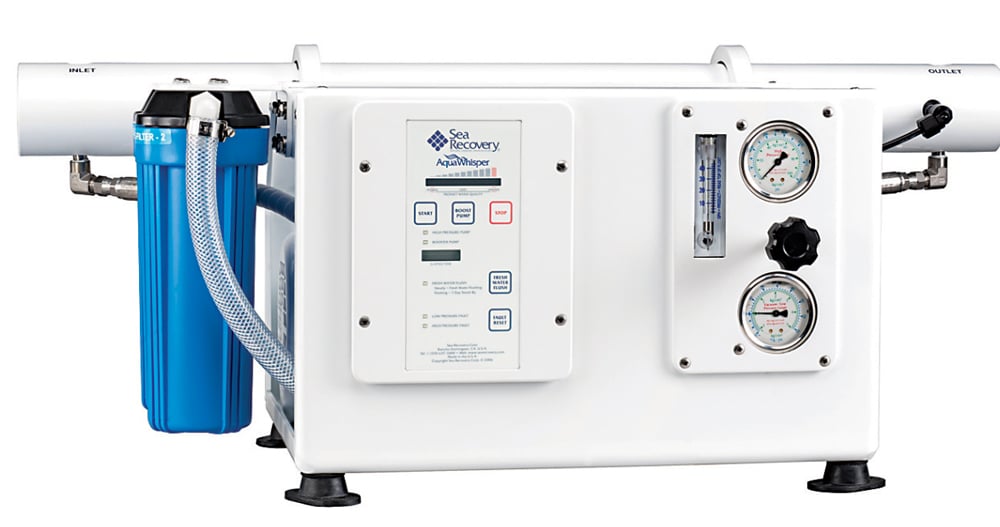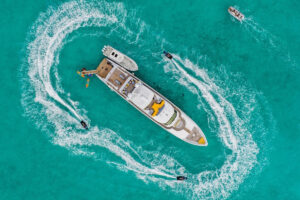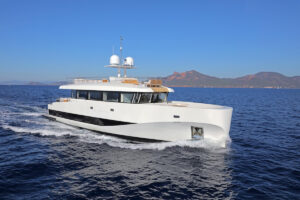
Freshwater Systems
As far as I know, neither Ben Franklin nor Rowland Howard were yachtsmen, but Howard spoke to a yachting issue when he paraphrased Franklin to observe that “you never miss the water till the well runs dry.” We, of course, have a water tank or two aboard rather than a well, but the point’s the same. We take a good, continuous supply of fresh water for granted aboard modern cruising yachts, and we sometimes don’t think much about the freshwater systems until we are forced to choose between taking a shower or cooking the pasta.
Freshwater systems are relatively straightforward and not too difficult to maintain if you understand a few basics. On small boats, a system can be as simple as a tank and a pump that comes on when a faucet is opened. Systems on most yachts, though, are a little more involved. They consist of one or more tanks, often with level monitors, feeding through a sediment filter to a pressure pump. The pump charges an accumulator (bladder) tank to maintain pressure without continuously running the pump. The pipe or hose from the accumulator then feeds to a manifold to supply cold water directly to the toilets, showers, tubs, lavatories, galley sinks and ice makers. It also feeds to a water heater, fitted with a temperature/ pressure relief valve for safety, to supply hot water to the showers, tubs and sinks. On larger yachts, there may be a connection to the washdown hoses and even to the firefighting system to avoid the damage that would result from spraying salt water inside the yacht in the event of a small fire.
The freshwater systems on yachts are potable; that is, both the water and the system’s components with which it comes into contact must meet the standards for drinking-water quality. In the United States, these are set by the Food and Drug Administration (FDA), so look for tanks, hoses and fittings made with FDA-approved materials, and always use such components when maintaining or repairing the system. This includes the tanks and components downstream, the tank fill and the vent lines, and make sure the vent lines terminate high enough to prevent them from submerging when the yacht rolls or takes a wave. If you’re careful about the water coming into the tank, the system should stay fairly clean, but ultraviolet sterilizers are available if you want to make sure you and your guests are as protected as possible.
Now, I have a bone to pick with current yacht design and construction practices. In my early years as a yacht designer, we put lots of freshwater tank capacity aboard, because only the largest yachts of the day could afford the space, expense and power needed for a steam distillation unit to produce fresh water under way. Then came reverse osmosis (RO) systems, also commonly known as watermakers, and eventually even the smallest yacht could afford one of the compact units to replenish the tanks. As a result, some new yachts have much smaller water tanks than their predecessors had. That, I think, is a mistake, and it came to light for me during an extended cruise on which we did a lot of gunkholing and anchoring. Because the tanks were too small to carry a sufficient supply, we had to run the generator to power the watermaker during periods in pristine anchorages where peace and quiet would have been preferable to the intrusive hum of the generator.
I’d opt for several tanks in ideal freshwater systems, filling only one for day trips, but filling them all for longer cruises, combined with a water maker large enough to recharge the tanks when running only a few hours a day. It’s more expensive but makes for a better cruising plan. Don’t suffer the fate of Samuel Taylor Coleridge’s ancient mariner — “Water, water, everywhere, nor any drop to drink.” Start with a good freshwater system and then maintain it to sustain your lifestyle.
Subscribe to the Yachting Life newsletter for cruising and chartering guides, new boat announcements, event updates, special offers and more!









